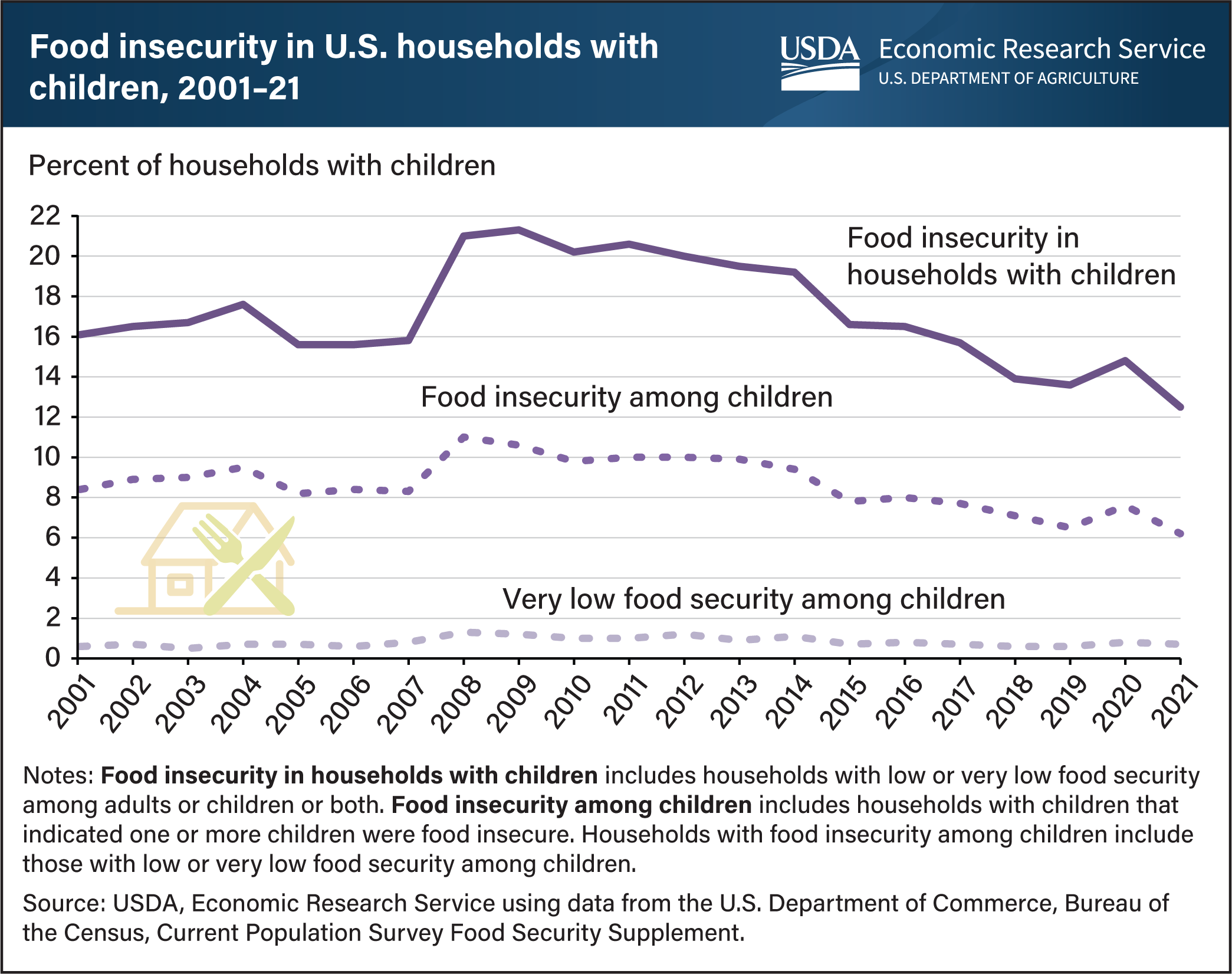Food insecurity in U.S. households with children reached two-decade low in 2021
- by Laura J. Hales
- 9/12/2022

USDA’s Economic Research Service (ERS) monitors the prevalence of food insecurity in U.S. households with children by measuring food insecurity for the household overall, as well as for adults and children separately. The first measure, food insecurity in households with children, indicates that at least one person in the household—whether an adult, a child, or both—was food insecure. The second measure, food insecurity among children, indicates that households were unable at times to provide adequate, nutritious food for their children. Both annual measures improved in 2021. In 2021, 12.5 percent of households with children were food insecure, a significant decrease from 14.8 percent in 2020 and the lowest point in two decades. The decline means that in 2021 nearly 2.5 million fewer children lived in households that had difficulty at times providing enough food for all their members because of a lack of resources. Food insecurity among children in these households declined significantly as well. The prevalence of food insecurity among children in 2021 was 6.2 percent, down from 7.6 percent in 2020. The most severe category of food insecurity, called very low food security among children, affected 0.7 percent of households with children in 2021, not significantly different from the 2020 prevalence rate of 0.8 percent. This chart appears in the ERS report, Household Food Security in the United States in 2021, released September 7, 2022.
We’d welcome your feedback!
Would you be willing to answer a few quick questions about your experience?

